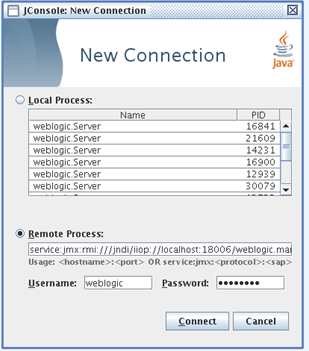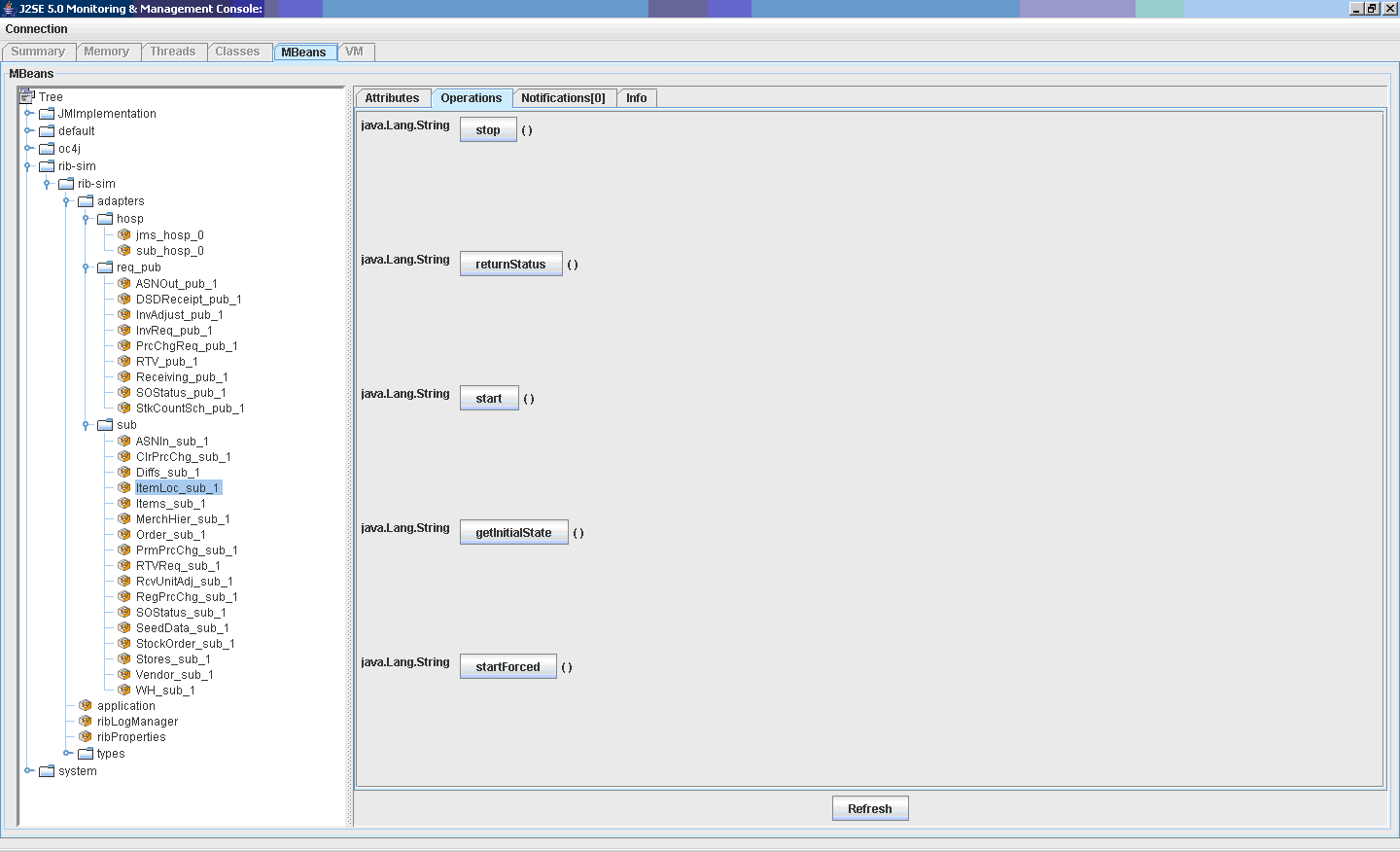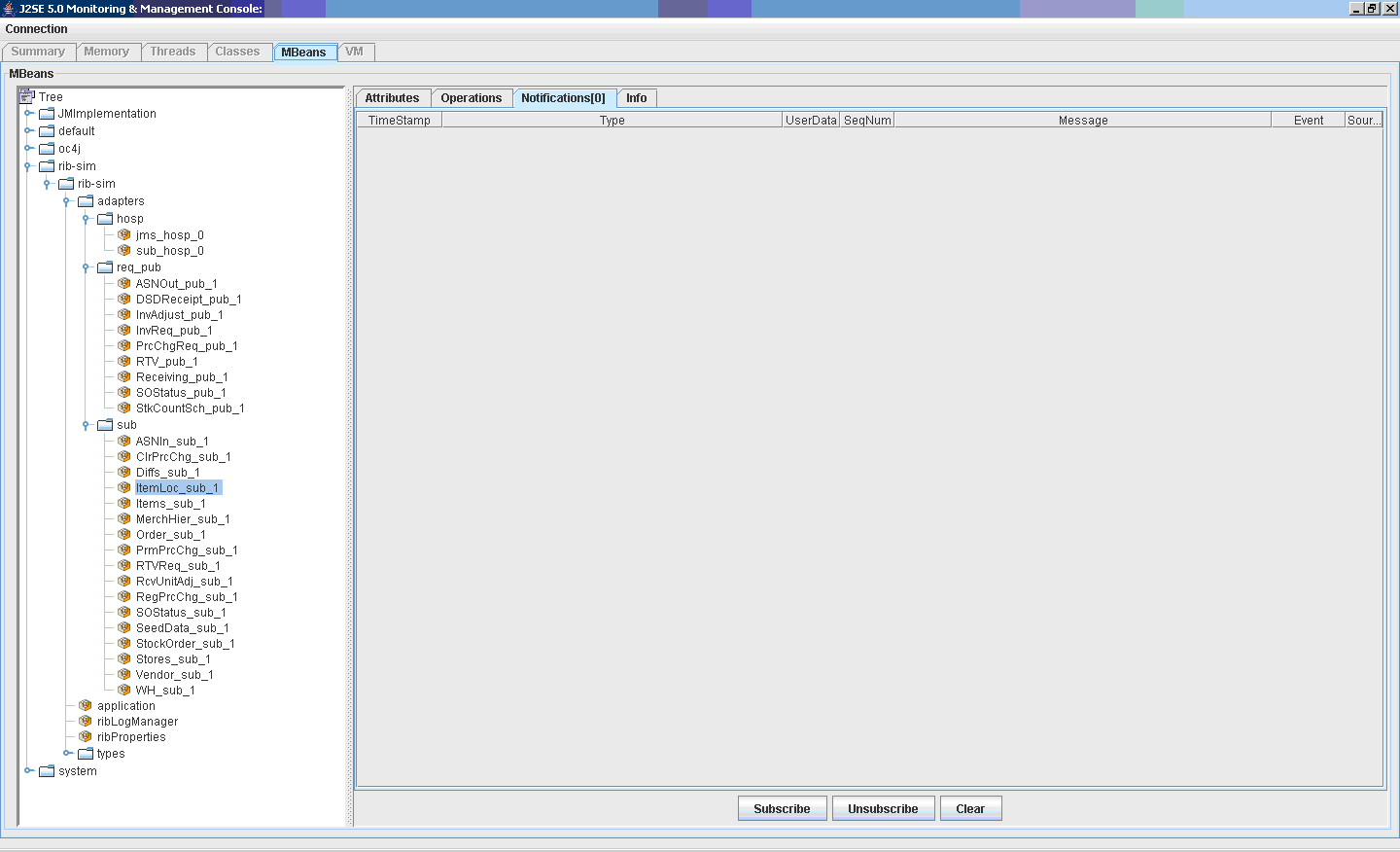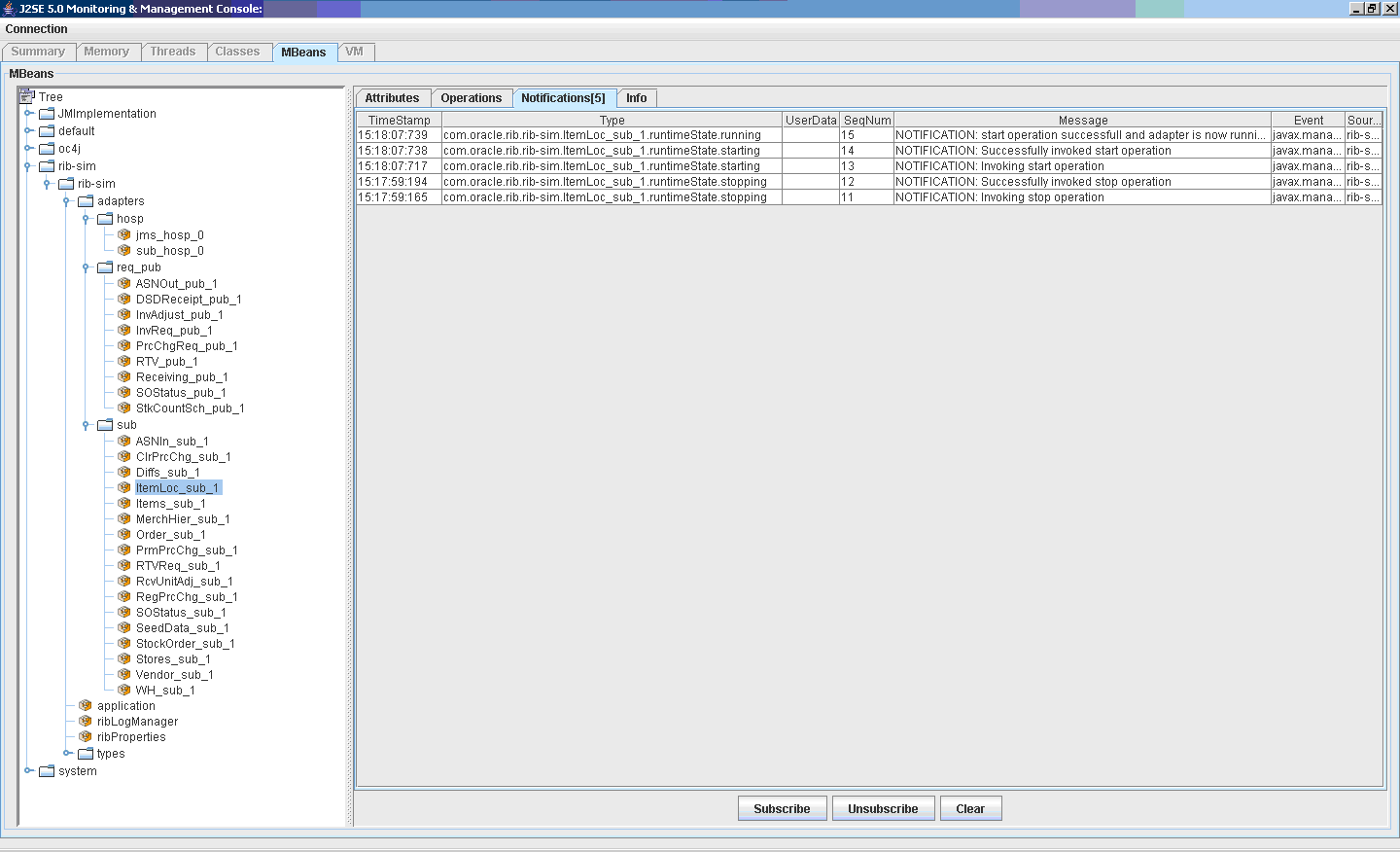| Oracle® Retail Integration Bus Operations Guide Release 19.0 F22950-01 |
|
 Previous |
 Next |
This chapter describes the RIB JMX infrastructure. JMX is a specification that provides capability for runtime management of Java components. Each RIB software component (PublisherEjb, SubscriberEjb, TafrEjb, HospitalRetryEjb, and so on) provides its own management facility by implementing management beans.
RIB MBean components use uniform registration, deployment, and communication mechanisms provided by the RIB JMX infrastructure.
RIB uses log4j2 to log business and system events in the RIB runtime system. The definitions of the loggers are statically defined and come from a configuration file (log4j2.xml). As logging is an expensive process we need to provide capability to manage log levels dynamically. The RIB Administration UI Log Manager MBean registers itself through the standard RIB JMX registration process at application startup. It provides an API to access current RIB loggers and change the log levels.
The AlertPublisherFactory is a factory that allows the user to select what alerting mechanism they want. A new JMX alerting mechanism will be added to the system. The JmxAlertPublisher class extends NotificationBroadcasterSupport and provides JMX notification capability. The JMX alerting capability is only available when running inside a container. A message type attribute will be added to the Alert class to provide the message filtering capability.
Any third party JMX console compatible with the Java EE container can be used to manage RIB components. RDMT uses the JMX command line interface provided by this design.
|
Note: For more information, see the "Java Management Extensions (JMX)" section in the Oracle Retail Integration Bus Implementation Guide. |
This example is for the Sun JConsole tool.
See:
http://docs.oracle.com/javase/6/docs/technotes/guides/management/jconsole.html
Complete the following steps:
Copy the following file to the host where the jconsole runs:
wljmxclient.jar
Create a startup file that sets the properties and classpath:
jconsole -J -Djava.class.path=$JAVA_HOME/lib/jconsole.jar:$JAVA_HOME/lib/tools.jar:$WL_HOME/server/lib/wljmxclient.jar -J-Djmx.remote.protocol.provider.pkgs=weblogic.management.remote -debug
Start the JConsole and log in to MBean server using a connect URL (for example, service:jmx:rmi:///jndi/iiop://localhost:18006/weblogic.management.mbeanservers.runtime).

Select and open any one of the MBean. It opens a window with four tabs: Attributes, Operations, Notifications, and Info.
The Attributes tab provides information about the attributes of the MBean.

The Operations tab includes the list of operations supported by that MBean.

The Notifications tab includes the list of notifications captured on that MBean. (You must subscribe for capturing the notifications.) Subscribing, unsubscribing, and clearing notifications can be done from this tab.

The Info tab provides details about the MBean.

When an MBean is subscribed for notifications, you can see the list of notifications that occurred for that MBean. The default is zero.

When some operations of the subscribed MBean are executed/invoked, notifications are captured under the Notifications tab.
